#Department of Electronic and Computer Engineering
Text
MIT scientists tune the entanglement structure in an array of qubits
New Post has been published on https://thedigitalinsider.com/mit-scientists-tune-the-entanglement-structure-in-an-array-of-qubits/
MIT scientists tune the entanglement structure in an array of qubits
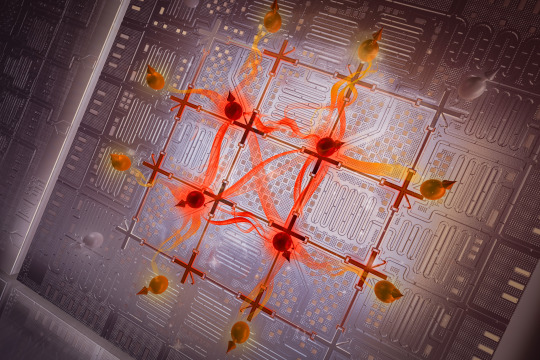

Entanglement is a form of correlation between quantum objects, such as particles at the atomic scale. This uniquely quantum phenomenon cannot be explained by the laws of classical physics, yet it is one of the properties that explains the macroscopic behavior of quantum systems.
Because entanglement is central to the way quantum systems work, understanding it better could give scientists a deeper sense of how information is stored and processed efficiently in such systems.
Qubits, or quantum bits, are the building blocks of a quantum computer. However, it is extremely difficult to make specific entangled states in many-qubit systems, let alone investigate them. There are also a variety of entangled states, and telling them apart can be challenging.
Now, MIT researchers have demonstrated a technique to efficiently generate entanglement among an array of superconducting qubits that exhibit a specific type of behavior.
Over the past years, the researchers at the Engineering Quantum Systems (EQuS) group have developed techniques using microwave technology to precisely control a quantum processor composed of superconducting circuits. In addition to these control techniques, the methods introduced in this work enable the processor to efficiently generate highly entangled states and shift those states from one type of entanglement to another — including between types that are more likely to support quantum speed-up and those that are not.
“Here, we are demonstrating that we can utilize the emerging quantum processors as a tool to further our understanding of physics. While everything we did in this experiment was on a scale which can still be simulated on a classical computer, we have a good roadmap for scaling this technology and methodology beyond the reach of classical computing,” says Amir H. Karamlou ’18, MEng ’18, PhD ’23, the lead author of the paper.
The senior author is William D. Oliver, the Henry Ellis Warren professor of electrical engineering and computer science and of physics, director of the Center for Quantum Engineering, leader of the EQuS group, and associate director of the Research Laboratory of Electronics. Karamlou and Oliver are joined by Research Scientist Jeff Grover, postdoc Ilan Rosen, and others in the departments of Electrical Engineering and Computer Science and of Physics at MIT, at MIT Lincoln Laboratory, and at Wellesley College and the University of Maryland. The research appears today in Nature.
Assessing entanglement
In a large quantum system comprising many interconnected qubits, one can think about entanglement as the amount of quantum information shared between a given subsystem of qubits and the rest of the larger system.
The entanglement within a quantum system can be categorized as area-law or volume-law, based on how this shared information scales with the geometry of subsystems. In volume-law entanglement, the amount of entanglement between a subsystem of qubits and the rest of the system grows proportionally with the total size of the subsystem.
On the other hand, area-law entanglement depends on how many shared connections exist between a subsystem of qubits and the larger system. As the subsystem expands, the amount of entanglement only grows along the boundary between the subsystem and the larger system.
In theory, the formation of volume-law entanglement is related to what makes quantum computing so powerful.
“While have not yet fully abstracted the role that entanglement plays in quantum algorithms, we do know that generating volume-law entanglement is a key ingredient to realizing a quantum advantage,” says Oliver.
However, volume-law entanglement is also more complex than area-law entanglement and practically prohibitive at scale to simulate using a classical computer.
“As you increase the complexity of your quantum system, it becomes increasingly difficult to simulate it with conventional computers. If I am trying to fully keep track of a system with 80 qubits, for instance, then I would need to store more information than what we have stored throughout the history of humanity,” Karamlou says.
The researchers created a quantum processor and control protocol that enable them to efficiently generate and probe both types of entanglement.
Their processor comprises superconducting circuits, which are used to engineer artificial atoms. The artificial atoms are utilized as qubits, which can be controlled and read out with high accuracy using microwave signals.
The device used for this experiment contained 16 qubits, arranged in a two-dimensional grid. The researchers carefully tuned the processor so all 16 qubits have the same transition frequency. Then, they applied an additional microwave drive to all of the qubits simultaneously.
If this microwave drive has the same frequency as the qubits, it generates quantum states that exhibit volume-law entanglement. However, as the microwave frequency increases or decreases, the qubits exhibit less volume-law entanglement, eventually crossing over to entangled states that increasingly follow an area-law scaling.
Careful control
“Our experiment is a tour de force of the capabilities of superconducting quantum processors. In one experiment, we operated the processor both as an analog simulation device, enabling us to efficiently prepare states with different entanglement structures, and as a digital computing device, needed to measure the ensuing entanglement scaling,” says Rosen.
To enable that control, the team put years of work into carefully building up the infrastructure around the quantum processor.
By demonstrating the crossover from volume-law to area-law entanglement, the researchers experimentally confirmed what theoretical studies had predicted. More importantly, this method can be used to determine whether the entanglement in a generic quantum processor is area-law or volume-law.
“The MIT experiment underscores the distinction between area-law and volume-law entanglement in two-dimensional quantum simulations using superconducting qubits. This beautifully complements our work on entanglement Hamiltonian tomography with trapped ions in a parallel publication published in Nature in 2023,” says Peter Zoller, a professor of theoretical physics at the University of Innsbruck, who was not involved with this work.
“Quantifying entanglement in large quantum systems is a challenging task for classical computers but a good example of where quantum simulation could help,” says Pedram Roushan of Google, who also was not involved in the study. “Using a 2D array of superconducting qubits, Karamlou and colleagues were able to measure entanglement entropy of various subsystems of various sizes. They measure the volume-law and area-law contributions to entropy, revealing crossover behavior as the system��s quantum state energy is tuned. It powerfully demonstrates the unique insights quantum simulators can offer.”
In the future, scientists could utilize this technique to study the thermodynamic behavior of complex quantum systems, which is too complex to be studied using current analytical methods and practically prohibitive to simulate on even the world’s most powerful supercomputers.
“The experiments we did in this work can be used to characterize or benchmark larger-scale quantum systems, and we may also learn something more about the nature of entanglement in these many-body systems,” says Karamlou.
Additional co-authors of the study are Sarah E. Muschinske, Cora N. Barrett, Agustin Di Paolo, Leon Ding, Patrick M. Harrington, Max Hays, Rabindra Das, David K. Kim, Bethany M. Niedzielski, Meghan Schuldt, Kyle Serniak, Mollie E. Schwartz, Jonilyn L. Yoder, Simon Gustavsson, and Yariv Yanay.
This research is funded, in part, by the U.S. Department of Energy, the U.S. Defense Advanced Research Projects Agency, the U.S. Army Research Office, the National Science Foundation, the STC Center for Integrated Quantum Materials, the Wellesley College Samuel and Hilda Levitt Fellowship, NASA, and the Oak Ridge Institute for Science and Education.
#2023#Algorithms#analog#artificial#atomic#atomic scale#atoms#Behavior#benchmark#Building#classical#college#complexity#computer#Computer Science#Computer science and technology#computers#computing#defense#Defense Advanced Research Projects Agency (DARPA)#Department of Energy (DoE)#education#Electrical Engineering&Computer Science (eecs)#Electronics#energy#Engineer#engineering#Explained#form#Foundation
0 notes
Text

LaRue Burbank, mathematician and computer, is just one of the many women who were instrumental to NASA missions.
4 Little Known Women Who Made Huge Contributions to NASA
Women have always played a significant role at NASA and its predecessor NACA, although for much of the agency’s history, they received neither the praise nor recognition that their contributions deserved. To celebrate Women’s History Month – and properly highlight some of the little-known women-led accomplishments of NASA’s early history – our archivists gathered the stories of four women whose work was critical to NASA’s success and paved the way for future generations.
LaRue Burbank: One of the Women Who Helped Land a Man on the Moon
LaRue Burbank was a trailblazing mathematician at NASA. Hired in 1954 at Langley Memorial Aeronautical Laboratory (now NASA’s Langley Research Center), she, like many other young women at NACA, the predecessor to NASA, had a bachelor's degree in mathematics. But unlike most, she also had a physics degree. For the next four years, she worked as a "human computer," conducting complex data analyses for engineers using calculators, slide rules, and other instruments. After NASA's founding, she continued this vital work for Project Mercury.
In 1962, she transferred to the newly established Manned Spacecraft Center (now NASA’s Johnson Space Center) in Houston, becoming one of the few female professionals and managers there. Her expertise in electronics engineering led her to develop critical display systems used by flight controllers in Mission Control to monitor spacecraft during missions. Her work on the Apollo missions was vital to achieving President Kennedy's goal of landing a man on the Moon.
Eilene Galloway: How NASA became… NASA
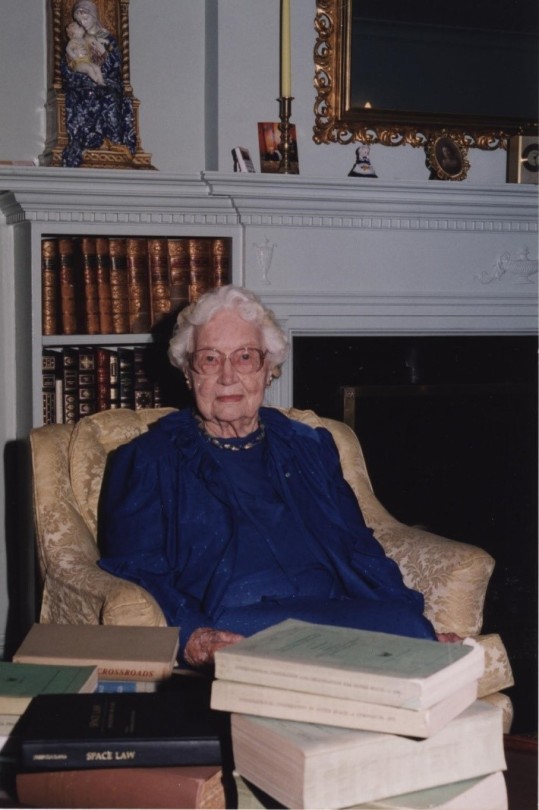
Eilene Galloway wasn't a NASA employee, but she played a huge role in its very creation. In 1957, after the Soviet Union launched Sputnik, Senator Richard Russell Jr. called on Galloway, an expert on the Atomic Energy Act, to write a report on the U.S. response to the space race. Initially, legislators aimed to essentially re-write the Atomic Energy Act to handle the U.S. space goals. However, Galloway argued that the existing military framework wouldn't suffice – a new agency was needed to oversee both military and civilian aspects of space exploration. This included not just defense, but also meteorology, communications, and international cooperation.
Her work on the National Aeronautics and Space Act ensured NASA had the power to accomplish all these goals, without limitations from the Department of Defense or restrictions on international agreements. Galloway is even to thank for the name "National Aeronautics and Space Administration", as initially NASA was to be called “National Aeronautics and Space Agency” which was deemed to not carry enough weight and status for the wide-ranging role that NASA was to fill.
Barbara Scott: The “Star Trek Nerd” Who Led Our Understanding of the Stars
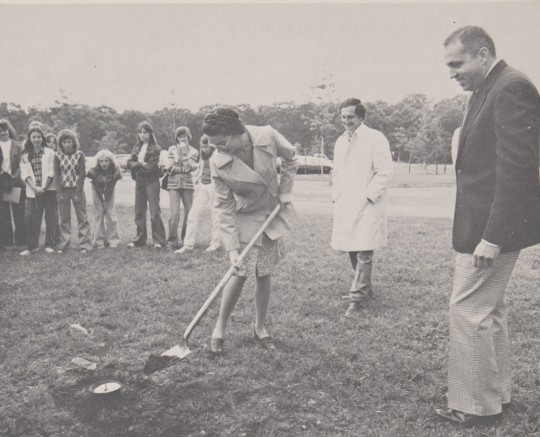
A self-described "Star Trek nerd," Barbara Scott's passion for space wasn't steered toward engineering by her guidance counselor. But that didn't stop her! Fueled by her love of math and computer science, she landed at Goddard Spaceflight Center in 1977. One of the first women working on flight software, Barbara's coding skills became instrumental on missions like the International Ultraviolet Explorer (IUE) and the Thermal Canister Experiment on the Space Shuttle's STS-3. For the final decade of her impressive career, Scott managed the flight software for the iconic Hubble Space Telescope, a testament to her dedication to space exploration.
Dr. Claire Parkinson: An Early Pioneer in Climate Science Whose Work is Still Saving Lives

Dr. Claire Parkinson's love of math blossomed into a passion for climate science. Inspired by the Moon landing, and the fight for civil rights, she pursued a graduate degree in climatology. In 1978, her talents landed her at Goddard, where she continued her research on sea ice modeling. But Parkinson's impact goes beyond theory. She began analyzing satellite data, leading to a groundbreaking discovery: a decline in Arctic sea ice coverage between 1973 and 1987. This critical finding caught the attention of Senator Al Gore, highlighting the urgency of climate change.
Parkinson's leadership extended beyond research. As Project Scientist for the Aqua satellite, she championed making its data freely available. This real-time information has benefitted countless projects, from wildfire management to weather forecasting, even aiding in monitoring the COVID-19 pandemic. Parkinson's dedication to understanding sea ice patterns and the impact of climate change continues to be a valuable resource for our planet.
Make sure to follow us on Tumblr for your regular dose of space!
#NASA#space#tech#technology#womens history month#women in STEM#math#climate science#computer science
2K notes
·
View notes
Text

New 'papertronics' offer biodegradable alternative to traditional circuits
As the Internet of Things connects more devices into a collective network—even single-use sensors like food packaging, agriculture or "smart bandages"—the need for biodegradable electronics grows increasingly urgent.
Binghamton University Professor Seokheun "Sean" Choi sought to investigate his ideas about integrated papertronics. A new research paper published in Advanced Sustainable Systems reports his latest findings—and they could revolutionize how we monitor the world around us.
"The biggest problem with paper for electronics is that the paper is highly porous and rough," said Choi, a faculty member in the Thomas J. Watson College of Engineering and Applied Science's Department of Electrical and Computer Engineering. "These properties are very helpful for paperfluidics, because those devices require high surface area and roughness—but for electronics, they pose a critical challenge."
Read more.
#Materials Science#Science#Electronics#Paper#Flexible electronics#Capillary action#Binghamtom University
27 notes
·
View notes
Text


Tokay Woman
DHN.001 - トッケイウーマン
AKA Caesura Harp - シーズラ・ハープ
“Ugh, I wish I didn't have time for this.”
Good Point - Never Late
Bad Point - Angry, Biting
Like - Compassion
Dislike - Meetings, Citrus
4’10” (147.32 cm)
A(n initially) non-combat robot built by Dr. Taylor Harp. Designed based after the tokay gecko, Gekko gecko (yes, laugh it up). She’s a dedicated timekeeper and statistician rather than a construction worker, acting as more of an upper management robot.
Tokay’s systems are built from Flash Man’s, reverse engineered, giving her time stopping powers (Flash Freeze). It is not 100% a copy of that technology, though, and both systems run on a separate ‘clock’ (so to say), so neither could cancel out the others time stop, or be able to perceive the other when the others’ power is in use. Tokay also has a little extra ‘juice’ in the form of an unusual, otherworldly artifact discovered by Dr. Harp…
Despite being of a time-stop variety, the Flash Freeze visually takes on the appearance of an ice attack (due to stopped objects taking on a shiny, shimmering, icy cyan tone), though there is no cold associated with it directly. Tokay’s orange markings glow cyan blue when the system is active. Though the attack does not ‘generate’ cold, due to the unusual nature of the artifact used to power the time stop, Tokay herself will get very cold when using Flash Freeze, rather than heating up. Her sensory systems are designed with this in mind, so she can shrug it off.
Tokay was originally designed to stop accidents from happening, and still does from time to time, but it was discovered that her powers had advantages with more tedious, managerial jobs, resulting in her being reassigned. This made her quite irate.

Her primary job involves paperwork. …Lots, and lots of paperwork. However, there are limitations; electronics that transmit data over networks don’t function properly in her time stopped ‘bubble’. If she needs to look up anything, it either needs to be on physical media, or on a hard disk fully within her functional time stop range.
Her superiors tend to boast about her efficacy, saying the work she finishes in days would take entire departments many weeks to do. She does not appreciate the praise, as she never asked for the job. However, with that praise comes a paycheck equivalent to the amount of work she does (since the computers in her bubble record the actual time spent), which goes back to Dr. Harp in order to support not only her own maintenance, but the quality of life of her siblings. For them, she endures the indignity and mind-numbing tedium.
When she’s not on the job (which only takes moments of real time despite taking hours and HOURS of her own), she actually likes to do a bit of vigilante work (to make up for the mind-numbing number crunching garbage she normally has to deal with), using her time stopping powers. However, while Flash Freeze can function over longer periods of time in low-stress situations than, say, the Time Stopper, it uses significantly more energy when used in combat situations. Often times, Tokay will have to selectively unstop portions of the robots she’s fighting in order to redirect their momentum, or deal damage. However, she’s become very good at it.
Tokay has a habit of taking a little too much of her frustration out on her opponents while hunting in this way, and it is not uncommon for her to go a little overboard butchering the robots she apprehends, though they normally do not ‘suffer’ much due to the nature of her time stop powers. She rarely does this to self-aware robots - usually just dangerous rogue robots running simpler AI - but will not hesitate if pushed to the brink of her patience…
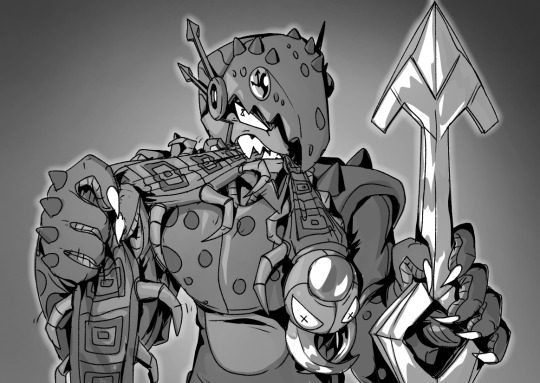
To give herself an edge, she went behind the back of Dr. Harp to get equipped with ice weaponry, specifically an ice spear that can separate into two smaller ice blades, one significantly longer than the other, to resemble clock hands. These unnamed weapons can be rearranged into other forms for combat variety, and can be used to direct Flash Freeze to only affect single targets, allowing its effective energy capacity to be extended in combat scenarios. Single targets frozen this way take on a lightly fluorescent cyan hue, with a brighter glowing ‘outline’ along their contours.
They can also be time-frozen in mid-air when thrown, and recalled along their original trajectory to act almost like delayed boomerangs, both separately and when combined. She cannot use them as platforms when they’re frozen in the air like this, as they will immediately unfreeze when she grabs them, but others can use them as platforms if need be. They can also ‘freeze’ water to create platforms that she or others can use.

Similar to Slash Girl, Tokay has a ‘failsafe’ of sorts, but for a very different purpose and to very different ends. Located in the cavity the Flash Freeze is installed, it will hard shut-off the device the second it reaches its energy capacity. While it can be used past that, the consequences are unpleasant; it starts draining Tokay’s ‘life’ in the form of her actual total time in existence, rather than just energy reserves, second for second. While this would seem inconsequential to a robot that could technically live forever, the sensation of having one’s time alive sucked out of them is not only incredibly painful, but creates a unique sense of existential dread… so it’s best that shutoff not be… damaged.
Tokay appears to never sleep, but that’s because she activates Flash Freeze while recharging/sleeping. It uses an unbelievable amount of energy and technically increases the time she takes recharging by 3x, but appears to take mere seconds. She uses the excuse that charging time stop equipment simply takes that much energy, without revealing that she’s powering it on company time/energy while in use. It’s a small revenge for what they make her do.

Tokay does have to go in for basic maintenance repair almost five times more frequently than her siblings because she's literally physically running for hours per every real-time second that she’s on the job. While she's not doing it 24/7, the others - or even the humans - don't really grasp it, and without the ability to experience it, probably never will, as she can only describe what she goes through so many times with people brushing it off as not a big deal for such an advanced robot.
This need for constant repairs despite ‘only having an office job’ gives her a reputation for being ‘fragile’ to others (especially other, non-DHN construction and worker robots), further cementing her typically dour attitude. Nevertheless, she genuinely appreciates anybody willing to show a more active understanding and compassion towards her situation regardless (or in spite) of her cold and bitter demeanor.
In an unusual change, Tokay’s central computer is not located in her head with her sensory equipment, but rather in her back, nested between the Flash Freeze unit’s housing and her ‘backpack’, which serves refrigeration functions. Due to the unusual nature of her time powers, placing her computer and IC chip as close to the artifact as possible keeps her perception stable. It’s also why she has a refrigeration unit in the first place; due to the artifact drawing heat out of the environment when active, it’s best to keep the internal temperatures of her critical components low at all times rather than fluctuating between cold and hot and risking destabilization of wires, contacts, and other fine electronics through temperature-based expansion and contraction. That said, she’s not averse to indulging in external warmth; as long as it’s not so severe that it begins to heat her core components.
Tokay’s ‘face’ rests on a hinge, and instead of a brain case, there is a recess behind her humanoid facial features, which can flip up into her reptilian helmet in such a way that said helmet becomes her face. Her helmet contains high-speed detection optics that can snap shots of sudden movements; normally these are hooked to her Flash Freeze, so she can activate it on moment’s notice, as part of her original job to prevent work accidents. However, those eyes are not terribly good at anything other than motion detection (since the cameras only snap single shots, rather than recording video), so going into helmet-only mode tends to be reserved for high-speed combat against agile foes… or being sufficiently angry that she’s already not seeing straight.

An unusual small detail of her design is her eyes, both on her helmet and face. Those on her helmet have a split pupil, with two ‘halves’ moving independently in the semblance of analogue clock hands. They do not tell time, but can rotate and shift around to imply a direction that they are focusing, or to emote. The eyes on her humanoid face have hourglass-shaped irises/pupils with a faintly glowing blue rim. They rotate once every time she blinks, usually imperceptible, but noticeable as she opens her eyes if she’s blinking deliberately slow.
When wearing business attire that requires her to remove her reptilian ‘helmet’, she will use a temporary cranial dome that hooks into the recessed cavity on the ‘back’ of her head, typically with a ginger wig matching the usual color of her spines.
Like her immediate sister, Reach, Tokay can climb walls, but generally only does so to get places faster, rather than clinging to them for long periods of time to do work. Her finger pads, especially at her fingertips, have a passive adhesion effect akin to light cellophane tape, and she can activate additional electromagnetic adhesion properties in her whole hand for climbing.
Tokay needs to keep occupied; when she has absolutely nothing to do, she finds herself unable to resist 'ticking' away seconds in perfect time, whether by finger/foot-tapping, pen-clicking, etc.
Her name is a layered pun, and the only one among the Harp Numbers where her animal is her primary name rather than the hidden pun.
Tokay (tokkei) gecko is her animal design
Tokei is Japanese for “clock”
Toukei is Japanese for “statistics”
Touketsu means “to freeze” both in a literal and economic sense
Her civilian name, Caesura (pronounced “seizure-uh”), is a mark in musical notation which "denotes a brief, silent pause, during which metrical time is not counted" and is indicated with the symbol 𝄓.
#oc tokay woman#fancharacter#mega man#remes data cd#my babygirl who's actually a girl but still has the weird tired businessman vibe#she got a ton of dev recently and is a big part of why i'm making this blog hahaha
42 notes
·
View notes
Text

Lockheed Martin will integrate AARGM-ER missile into F-35 aircraft
Fernando Valduga By Fernando Valduga 01/16/2024 - 16:00 in Armaments, Military
On January 12, NAVAIR (Naval Air Systems Command), on behalf of the U.S. Department of Defense, signed a $97.3 million contract for the integration of the Northrop Grumman AGM-88G AARGM-ER (Advanced Anti-Radiation Guided Missile-Extended Range) missile with the F-35A/B/C Lightning II multifunctional fighters family.
The contract, scheduled to be completed in March 2026, will be executed by the U.S. Air Force (F-35A), the U.S. Marine Corps (F-35B and F-35C), the U.S. Navy (F-35C) and partners of the F-35 JSF program, including Australia, Canada, the United Kingdom, Norway, Italy, Denmark, the Netherlands and other users of the 17º aircraft production batch.
'Lot 17' is a designation given to the last portion of F-35 aircraft produced. The U.S. Department of Defense finalized an agreement for production in December 2022.
This 'lot' includes 126 aircraft that will be the first iteration to include the Technical Refresh-3 (TR-3) update, the modernized hardware needed to power the capabilities of Block 4. The TR-3 includes a new integrated central processor with greater computing power, a panoramic display in the cabin and an improved memory unit.
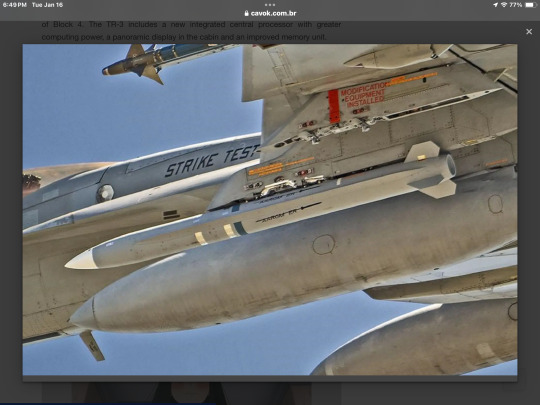
Previously, the AGM-88G AARGM-ER missiles were integrated with electronic war and air defense suppression aircraft F/A-18E/F Super Hornet and EA-18G Growler, with flight tests carried out in 2021 and 2022. On September 25, 2023, Northrop Grumman announced that it was selected by USAF to supply the new anti-radiation missile for the F-35A under the codename SiAW (Stand-in Attack Weapon), based on the AGM-88G AARGM-ER project.
The AARGM-ER was designed for enemy air defense suppression (SEAD) operations, capable of attacking anti-aircraft and missile systems, ballistic and cruise missile launchers, GPS interference systems and anti-satellite systems in strongly defended areas and negation environments (A2/AD). The missile features a new 290 mm diameter fuselage and a subsonic ramjet engine, doubling its range from 110 to approximately 220-250 km and increasing its maximum speed.
The AGM-88G AARGM-ER missiles are produced with a new propulsion and improved warhead set, based on newly produced orientation systems comprising a passive radar signal receiver, satellite navigation, counting system and millimeter wave radar. This differs from the AGM-88E AARGM, where propulsion and warhead are derived from AGM-88 HARM (high-speed anti-radiation missiles) stored missiles from the previous generation.
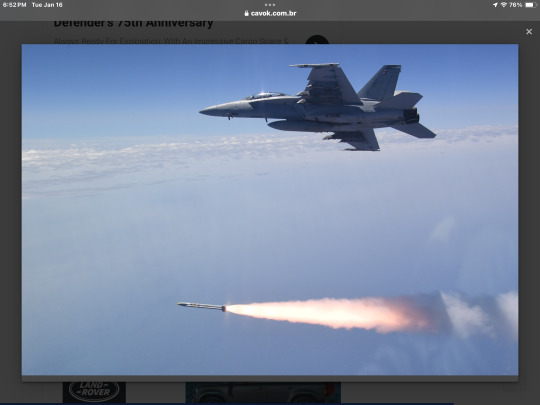
In January 2018, the U.S. Navy hired Northrop Grumman to develop the AARGM-ER. On March 18, 2019, the USAF announced collaboration with the U.S. Navy to adapt the AARGM-ER for the F-35A, allocating $163 million for fiscal year 2020. At the same time, the U.S. Navy ordered additional development for $323 million, with funding allocated until 2020.
In July 2019, the Department of Defense granted Lockheed Martin a $34.7 million contract to initiate modifications to the F-35's internal weapon compartments to transport the AARGM-ER. The work, including the reinforcement of the fuselage structures, was completed in July 2022. The design and integration efforts are supervised by the PMA-242 (Direct and Time Sensitive Attack) office of the Department of Defense.
Tags: AGM-88E AARGMweaponsMilitary AviationF-35 Lightning IILockheed Martin
Sharing
tweet
Fernando Valduga
Fernando Valduga
Aviation photographer and pilot since 1992, he has participated in several events and air operations, such as Cruzex, AirVenture, Dayton Airshow and FIDAE. He has works published in specialized aviation magazines in Brazil and abroad. He uses Canon equipment during his photographic work in the world of aviation.
Related news
MILITARY
Airbus Helicopters will expand portfolio of unmanned aerial systems with the acquisition of Aerovel
16/01/2024 - 14:00
HELICOPTERS
Albania receives two UH-60 Black Hawk helicopters with financial assistance from the US
16/01/2024 - 11:30
MILITARY
Belgian Air Force receives its last A400M Atlas transport aircraft
16/01/2024 - 09:50
MILITARY
U.S. Air Force officer crowned Miss America in 2024
16/01/2024 - 08:27
MILITARY
The image of the Russian Ilyushin Il-22M hit by the Ukrainian air defense appears
15/01/2024 - 23:19
MILITARY
Royal Jordanian Air Force signs contract for new F-16C/D Block 70 fighters
15/01/2024 - 20:35
8 notes
·
View notes
Text
Dev Diary 2 - Character Creation Part 1
Torchship has a very involved session zero. You are not just making your characters; you’re making a program (building out a sector of space and your mission there), a rocket (by customising templates), and, indirectly, the state you work for. But characters are where we’ll start.
A Torchship character is fairly mechanically involved, but there’s not a lot of numbers. Instead, you have layers of character-defining mechanics, skills, and identities which will come into play during the campaign. The character creation section also acts to teach new players about the world, asking them right away to dive into questions about societies, politics, and life by using the various building blocks as introductions to setting concepts.
Level & Departments
The first thing you decide is your character’s level. Your level is basically how you start as a character, how powerful you are when you join the game.
You have the option of playing B-Team, which is your basic crew member. They work a single Department and they either have expertise in a single job, or they’re working on a second team. However, the main purpose of the B-Teamer start is that you can turn your NPC crew into B-Teamers if you want to play as them later, maybe if you’re doing a Lower Decks episode or something like that.
Most starting PCs are the A-Team, the overachieving go-getters who end up on the bridge because they’ve got the most experience, most qualifications, or they’ve been working hardest for it. A-Team means you get to have two Departments and an expertise. The only thing that B-Team has which A-Team doesn’t is that they get more hobbies to invest in, because they actually have a life.
Departments are what colour shirt you wear on the ship, what your job is. Departments are used to sort skills out, and gate some special equipment later on. It’s your role on the team, basically.
There’s 8 departments, so a traditional 4-person RPG group playing A-Teamers can cover all the Departments between themselves (though it’s not a big deal if you have overlap and are missing some; that’s what NPCs are for!). The departments are…
Administration, the diplomats, bureaucrats, leaders, and social scientists which are the closest thing to the commanders. Your most skilled Administrator is probably your Vehicle Commander (that’s the captain). They wear gold.
Engineering, the damage controllers, mechanics, inventors, and technicians on the rocket, who keep the reactor from blowing up. They wear safety orange.
Astrogation, the flight planners, pilots, drivers, and stellar navigators who fly the ship, plot orbits, and drive shuttles, pods, and rovers. They wear navy blue.
Security, the soldiers, brawlers, field officers, and crisis negotiators who put their bodies between danger and the rest of the crew. They wear red.
Tactical, the artillery officers, drone pilots, missile plotters, and space marshals who operate the weapons and coordinate with other rockets. They wear olive green.
Research, the observers, academics, technologists, and physical scientists who scan, record, and make theories about Weird Space Shit. They wear baby blue.
Medical, the paramedics, surgeons, pharmacists, and life scientists who keep the crew from dying of all the dangerous things in space. They wear teal.
Signals, the programmers, roboticists, telecom operators, and hackers who run the ship’s computers, radios, and other electronics. They wear purple.
Identity
When you start to make your character, you begin by choosing a few high-level concepts which will guide character creation going forward. These concepts help you narrow down who your character is and provide frameworks and suggestions for the rest of the process.
Your character’s identity is what species they are and what society they are from. These contain a bunch of information for you, from a quick blurb about it to some naming conventions, followed by a list of suggested Traits. We’ll get more into Traits later, but essentially, these are features your character can take which give them unique capabilities. The traits in your Identity are not mandatory, they’re just suggestions, and they’re listed in order of how widespread they are within an identity.
The first thing you’ll notice is that there is not default ‘human’ option; this is not a game where humans are the boring ‘neutral’ choice. There are six kinds of humans you can play, eight if you include sub-categories, all with unique sets of traits, and many of the human identities are more mechanically similar to some aliens than they are to each other. You can easily play an all-human game, and yet have nobody in the group sharing any traits.
For instance, let’s talk your basic, bog-standard Earth human. This should be easy right, you don’t get anything special except maybe a bonus ability to represent human diversity?
Hell no. If you play a Terran in Torchship, you immediately discover one of the setting’s quirks; Earth is a high-gravity world by the standards of humanoid life. 1g can make you a heavyworlder; you get a bonus to physical strength and endurance, you hit harder in melee, and you aren’t well suited to 0g.
Terrans are then divided into rural and urban sub-identity suggestions, with Urban Terrans speaking many languages and working nearest the IUR’s bureaucracy, while Rural Terrans have a connection to the local biomes and are more likely to be ‘baseliners’ with no genetic modifications. Oh yeah, surprise, genetic engineering is so widespread that not being genetically engineered is a trait you have to opt into.
The other human identities are just as detailed. You might be a tall Lunar, living and working in the underground industrial capital of Armstrong City. You could be a diminutive Martian, genetically engineered to survive the oxygen death zone of Mars and used to working with terraforming machines. You might be a low-grav Spacer, either a habber running human trade from the great spinning stations or an independent deep spacer living in the rings of Saturn or growing up on cargo rockets. Finally, the extrasolar colonies; Proxies from our nearest star with their many genetic augmentations, or the ‘free space’ of the wildcat colonies.
After humans, each of the aliens gets an identity page the same way. Being a classic pulpy space story, most aliens are humanoids with minor differences, because that’s fun! The alien identities covered in this section include nearly all the major alien powers in the setting, so you can play as a defector who has joined Star Patrol. We’ll go more into the various aliens in another diary, but we’ve got five options with a wide variety of recommended traits to cover them.
There’s also the Koath, the sole non-humanoid alien on the list. They’re crow-like aliens who joined the IUR as a peasant republic on a medieval world; what more do you want? Our eventual goal is that every alien identity will have at two sub-identities which represent different cultures or groups for each alien society we present; right now the Aquillians have four.
If you don’t really like any of them, you are free to declare your own identities and make up stuff, of course; the Trait system is very flexible and contains enough options that you should be able to play just about any kind of classic space alien. We’re even looking into making non-embodied characters playable, if you wanted to be an energy being, ghost haunting the rocket, or the ship’s computer which gained sentience (we just haven’t figured it out yet).
After you’ve picked your level, departments, and identities, you get into the meat of character creation, but this diary has already run long. Next time: Personal Information, Impulses, Certifications, and Traits!
96 notes
·
View notes
Text
Six of Crows/Shadow and Bone Modern College AU's
Finally, is Genya and David time. Let's go!!
Genya:
She had a difficult childhood, until she was adopted by a rich and adorable couple who never had children, she goes to fashion and design college and has a promising future with her private atelier that for now only exists on her instagram and when she uses her friends of models for their looks and posts the photos that make hundreds of thousands of people want their clothes.
Her best friends are Zoya and Alina, but her best crime duo is Nina, they love to get together and talk about their love lives and play matchmaker, why can't alina not understand like her best friend keeps staring at her and stops everything he's doing to hang out with her and help her always.
In addition, there is also Zoya who for months has not stopped talking about this spoiled prince who keeps irritating her, and because of this she goes to investigate, I mean check her friend's well-being and is even more intrigued when she sees him talking to the nerd cute guy from the engineering department, who helped her once with her cell phone and who she likes to talk to when I feel like everything is too heavy or just because she really likes him a lot and he's so cute talking about his inventions.
One day she decides to ask him out on a date and he gets all red and stutters but he agrees to go out with her and when they start dating he gives her a bracelet he made himself.
She loves hanging out with him in her workshop creating different pieces of clothing and watching him work.
David:
He had a pretty quiet childhood, (I like to think David is neurodivergent and has a hyper focus on building things physically or digitally and that's why he doesn't like to be touched or hugged by strangers), his parents were very good with technology , perhaps being scientists, love hypothesis felings, and supported him when he chose to study mechanical and computational engineering.
He doesn't have many friends at the beginning of college, just the lab guys and every now and then he ends up helping people who have problems with their electronics because he likes to figure out what went wrong.
And that's how he meets Genya and Nikolai, he thinks Genya is very pretty when he sees her for the first time but I don't quite understand why she keeps coming back to talk to him even without having any real problems and he can't believe it when she finally asks him out that this is for real and he really enjoys talking to him or more hearing about her dreams and goals and she respects him and his needs as well as his time so he is more than happy happy when he realizes that she might like him the same way he likes her.
Then one day he meets Nikolai, it was before Genya, he helps solve a lost file problem on his computer and since then Nikolai has been trying to talk to him about the company he's forming and how david would be paid very well and get everything that he wants there, but he doesn't feel that way, he was almost recruited by a company that wanted him but didn't accept his time to work and limited his curiosity so he doesn't know how he felt about it.
Until Genya helps both of them and makes a contract that everyone is very satisfied with the norms and legal stipulations, so he signs and ends up meeting very interesting people and ends up getting close to several people like Nikolai and Wylan, he likes their ideas and thinking about how to put them in his creations, and also Alina and Mal, who always when Genya gets too busy with one of his projects keep him company and remind him to eat and take a walk around campus and not get stuck with his inventions in the laboratory.
with the money he went on to earn he finally manages to make a wedding ring for Genya and on graduation day he proposes to her with a ruby ring he designed and they live happily ever after.
this turned out a little longer than i planned but with college that wa the best I could do by now on vaccation I have more time, I think the next chapter will be the last so, stay turned for Kaz and Inej part, xoxo.
17 notes
·
View notes
Text
Batch 2024 participates in 2-week off-campus internship
University of the Philippines Integrated School (UPIS) Batch 2024 completed their 2-week off-campus internship at various sites from February 12 to 23.
Part of the Grade 12 work program is the two-week off-campus internship which aims to apply the knowledge and skills they have obtained from Kindergarten to Grade 11, to experience a real-world work environment, to understand and explore the careers they may pursue in the future, and to develop proper attitudes regarding leadership structure, employee interactions, and professionalism.
Social Sciences and Humanities (SSH) Track
Grade 12 - Kalayaan, the Social Sciences and Humanities (SSH) track, had their work immersions at Bantayog ng mga Bayani Foundation, Interactive Children’s Literacy Program (ICLiP), M&P Creatives, and Teatrong Mulat ng Pilipinas. UP Diliman Information Office (DIO) and DZUP 1602, despite being within the UP campus, were also included as internship sites for the off-campus work immersion.
The sites offered internship tasks such as writing articles, creating scripts, designing social media posts and publicity materials, covering events, newscasting, hosting, observing and teaching classes, assisting video shoots, joining rehearsals, and participating in activities conducted by the sites.
Zaeda Wadi, a former UPDIO intern, shared some of the most important lessons she learned through her internship. “At the UP DIO, I learned that being attentive is such a helpful asset to have! Be it in article-writing, observing during programs, interacting with others, or following instructions, having a present mind makes things clearer—and easier. I also realized that there are various activities in UP Diliman that I can participate in! It opened more doors for me to venture that can set me on new experiences as a student and community member,” she stated.
Additionally, she talked about some of the discoveries she made through UP DIO. “UP DIO staff taught me that in the hustle of life, sharing conversations and laughs makes the office life bearable and memorable! I learned from their close bond how it is always nice, even essential, to check in daily wholesome chats with people we meet at the workplace,“ she shared.



Business and Entrepreneurship (BE) Track
Grade 12 - Kapayapaan, the Business and Entrepreneurship (BE) track, experienced working at Underdog Fitness PH, Revised Salon, Friuli Trattoria, Puff & Dough BakeLab, SGD Coffee, Street Kohi, Noki Japanese Fried Chicken, and Urban Chick for their off-campus internship.
Some of their work included taking orders from customers, cleaning and setting up the area, making orders and food products for the business, assisting in supply inventory, creating and designing social media posts, preparing financial reports, assisting in administrative-related tasks, and conducting market research.
Princess Tan, a former intern at Noki Japanese Fried Chicken, shared her thoughts on how different the off-campus internship is from completing regular coursework for classes. “The real world is less structured than the system in school. The tasks we had to do weren’t listed for us and weren’t taught to us from the very start to end. You are expected to learn the operations as you go through the work program. Additionally, mistakes would cost you more unlike in school where you’ll just get a deduction on your score,“ she said.

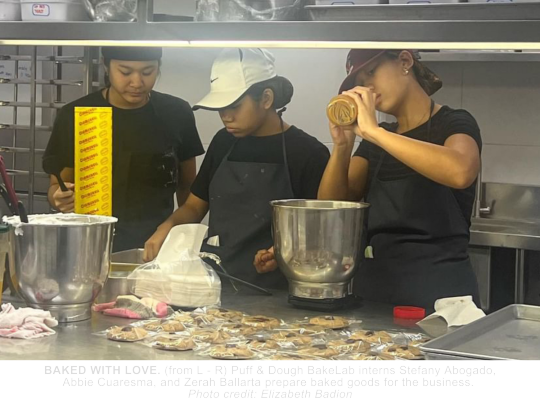

Applied Sciences and Engineering (ASE) Track
Grade 12 - Karangalan and Karunungan, the Applied Sciences and Engineering (ASE) track, held their internship programs at Ateneo de Manila University (ADMU) - Department of Information Systems and Computer Science (DISCS), ADMU - Department of Electronics, Computer, and Communications Engineering (ECCE), ADMU - Department of Mathematics, Buri Technologies, Department of Environment and Natural Resources (DENR) - Environmental Management Bureau (EMB), DENR - Mines and Geosciences Bureau (MGB), Department of Information and Communications Technology (DICT), Department of Science and Technology (DOST) - Advanced Science and Technology Institute (ASTI), DOST - Philippine Atmospheric, Geophysical, and Astronomical Services Administration (PAGASA), LCI Envi Corporation, New Era General Hospital, Smile Studio Dental, and Wilson Hobby Studio.
Some specific tasks given by the sites consisted of conducting playtests, exploring and programming with Artificial Intelligence (AI), attending workshops and seminars, testing websites, creating courses on websites, performing Test Case Documentation, listing products and packaging of companies, managing and operating with information and cybersecurity, weather research and reporting, assisting in dental-related work, input and documentation of dental procedures and prices, assisting in tech support with 2D software, 3D printing, and attending discussions and seminars held by the sites.
Enjoce Lampa, a former intern at ADMU - Department of Information Systems and Computer Science (DISCS), shared the skills he was able to develop or enhance through his experience. “The skill I used the most during the internship was definitely my knowledge in programming. I think I already had pretty good programming [or] coding knowledge from my experiences but this internship further enhanced my skills because I was able to use it on a real project. I learned the Godot game engine and its native language, GDScript, to create our game and I think I will be using this knowledge more in the future,“ he stated.

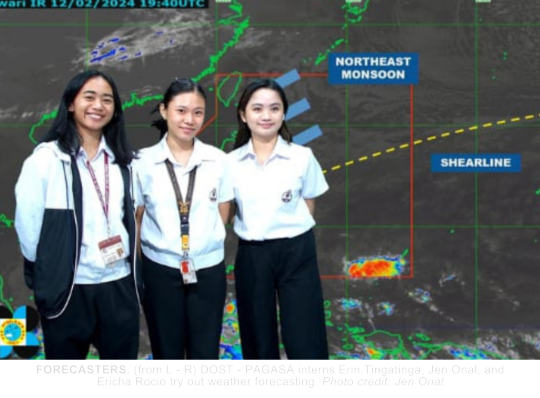
Batch 2024 is the first batch of Grade 12 students to experience separate cycles for their off-campus and on-campus internship since the pandemic. Last year, they finished their on-campus internship, which lasted from December 4 to 15. //by Mira Leaño and Ria Bautista
4 notes
·
View notes
Link
3 notes
·
View notes
Text
16^12's Angora planet setting for Cyberpunk RED
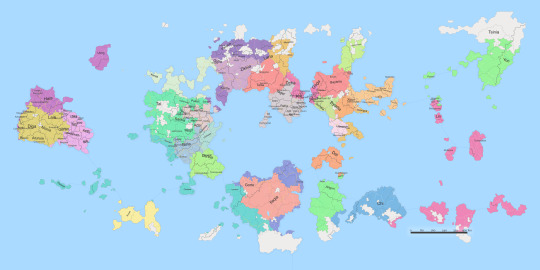
Essentially, this world has a certain multipolar syndicalist feel to it where progress/change & harmonious values conflict. Most of it is shown between the Samoan Libre System & the Shoshoni Union of Communes.
MAJOR AGENCIES
Arasaka alt= Salamar (Samoan Corporation)
Pflaumen= (HighTech & Synthetic-tier Androids Manufacturer, Austrian Cooperative)
Biotechnica alt= Tealogics Bioware (Samoan Corporation)
Continental Brands= Aguaticks (Portuguese Corporation)
Danger Gal alt= Electric Business Machines (Scottish Corporation)
Utalics (Symbolic Computation Specialists, Shoshoni Cooperative)
Militech International alt= Numic Armed Forces (Shoshoni Official Military Forces)
International Electric Corporation alt= International Computers Limited (Scottish Corporation)
SEGA= SENA (Samoan Corporation)
Gloss Foundation (Libreware worldwide Non-Profit Organization)
Sun Microsystems= Vera Altronics (Scottish Cooperative)
Hitachi= Keller Altronics (Samoan Cooperative)
Microsoft = Macroware (Shoshoni Corporation)
Atari= Vanguard Connectics
Commodore= Commodore Open Systems (Shoshoni Cooperative)
Wyatt Energetics (Electrical & Nuclear Energy Provider, Babylonian Cooperative)
Nineveh Accounting (Assyrian Corporation)
Network 54 alt= Maximus Hypermedia (worldwide information cooperative)
Petrochem alt= Persepolis Energetics (Persian Cooperative)
SovOil= Czar Industries (Polish Corporation)
Tekla Computation Group (Polish Cooperative)
Rak-Tech (Heavy Mechanical Engineering, Scottish Corporation)
Thornton Motor Company= Tekla Electric Motors (Electric Transportation & Telecoms, Polish Cooperative)
Raven Microcybernetics & Rocklin Augmentics= Vixen PicoCybernetics (Cyberware / Augmentations, Scottish Corporation)
Ziggurat= Metroplex Infrastructure (Babylonian Cooperative)
Pacha Technical Manufacturing (Incan Cooperative)
Merrill & Fisch (Burgund-Scottish financial corporation)
WorldSat CommNet (Burgund Cooperative)
Luanda Media Group (Angolan Cooperative)
Diverse Media Systems (Shoshoni Cooperative)
Lusitania News Service (Brazilian Cooperative)
Sanam (civilian, Vietnamese Cooperative)
Tsunami Design Systems (military, Vietnamese Cooperative)
Olivetti (Consumer Small Electronics, Italian Cooperative)
Adwa-Frya (Financial, Turkish Cooperative)
NEXT SECTION
Tbh, I do side mostly with Pflaumen hardware, Utalics software and GLOSS Foundation principles, albeit in my very own DIY manner. Hence my Solarpunk flavorings.
That being said, it is also derived from alternate renditions of our technological history (and quite a few alternate ones...), especially around DEC (Digital Equipment Corporation), Konrad Zuse AG & Symbolics (one among few Lisp Machine manufacturing departments). And it definitely pays off in feel.
2 notes
·
View notes
Text
With inspiration from “Tetris,” MIT researchers develop a better radiation detector
New Post has been published on https://thedigitalinsider.com/with-inspiration-from-tetris-mit-researchers-develop-a-better-radiation-detector/
With inspiration from “Tetris,” MIT researchers develop a better radiation detector


The spread of radioactive isotopes from the Fukushima Daiichi Nuclear Power Plant in Japan in 2011 and the ongoing threat of a possible release of radiation from the Zaporizhzhia nuclear complex in the Ukrainian war zone have underscored the need for effective and reliable ways of detecting and monitoring radioactive isotopes. Less dramatically, everyday operations of nuclear reactors, mining and processing of uranium into fuel rods, and the disposal of spent nuclear fuel also require monitoring of radioisotope release.
Now, researchers at MIT and the Lawrence Berkeley National Laboratory (LBNL) have come up with a computational basis for designing very simple, streamlined versions of sensor setups that can pinpoint the direction of a distributed source of radiation. They also demonstrated that by moving that sensor around to get multiple readings, they can pinpoint the physical location of the source. The inspiration for their clever innovation came from a surprising source: the popular computer game “Tetris.”
The team’s findings, which could likely be generalized to detectors for other kinds of radiation, are described in a paper published in Nature Communications, by MIT professors Mingda Li, Lin-Wen Hu, Benoit Forget, and Gordon Kohse; graduate students Ryotaro Okabe and Shangjie Xue; research scientist Jayson Vavrek SM ’16, PhD ’19 at LBNL; and a number of others at MIT and Lawrence Berkeley.
Radiation is usually detected using semiconductor materials, such as cadmium zinc telluride, that produce an electrical response when struck by high-energy radiation such as gamma rays. But because radiation penetrates so readily through matter, it’s difficult to determine the direction that signal came from with simple counting. Geiger counters, for example, simply provide a click sound when receiving radiation, without resolving the energy or type, so finding a source requires moving around to try to find the maximum sound, similarly to how handheld metal detectors work. The process requires the user to move closer to the source of radiation, which can add risk.
To provide directional information from a stationary device without getting too close, researchers use an array of detector grids along with another grid called a mask, which imprints a pattern on the array that differs depending on the direction of the source. An algorithm interprets the different timings and intensities of signals received by each separate detector or pixel. This often leads to a complex design of detectors.
Typical detector arrays for sensing the direction of radiation sources are large and expensive and include at least 100 pixels in a 10 by 10 array. However, the group found that using as few as four pixels arranged in the tetromino shapes of the figures in the “Tetris” game can come close to matching the accuracy of the large, expensive systems. The key is proper computerized reconstruction of the angles of arrival of the rays, based on the times each sensor detects the signal and the relative intensity each one detects, as reconstructed through an AI-guided study of simulated systems.
Of the different configurations of four pixels the researchers tried — square, or S-, J- or T-shaped — they found through repeated experiments that the most precise results were provided by the S-shaped array. This array gave directional readings that were accurate to within about 1 degree, but all three of the irregular shapes performed better than the square. This approach, Li says, “was literally inspired by ‘Tetris.’”
Key to making the system work is placing an insulating material such as a lead sheet between the pixels to increase the contrast between radiation readings coming into the detector from different directions. The lead between the pixels in these simplified arrays serves the same function as the more elaborate shadow masks used in the larger-array systems. Less symmetrical arrangements, the team found, provide more useful information from a small array, explains Okabe, who is the lead author of the work.
“The merit of using a small detector is in terms of engineering costs,” he says. Not only are the individual detector elements expensive, typically made of cadmium-zinc-telluride, or CZT, but all of the interconnections carrying information from those pixels also become much more complex. “The smaller and simpler the detector is, the better it is in terms of applications,” adds Li.
While there have been other versions of simplified arrays for radiation detection, many are only effective if the radiation is coming from a single localized source. They can be confused by multiple sources or those that are spread out in space, while the “Tetris”-based version can handle these situations well, adds Xue, co-lead author of the work.
In a single-blind field test at the Berkeley Lab with a real cesium radiation source, led by Vavrek, where the researchers at MIT did not know the ground-truth source location, a test device was performed with high accuracy in finding the direction and distance to the source.
“Radiation mapping is of utmost importance to the nuclear industry, as it can help rapidly locate sources of radiation and keep everyone safe,” says co-author Forget, an MIT professor of nuclear engineering and head of the Department of Nuclear Science and Engineering.
Vavrek, another co-lead-author, says that while in their study they focused on gamma-ray sources, he believes the computational tools they developed to extract directional information from the limited number of pixels are “much, much more general.” It isn’t restricted to certain wavelengths, it can also be used for neutrons, or even other forms of light, ultraviolet light, adds Hu, a senior scientist at MIT Nuclear Reactor Lab.
Nick Mann, a scientist with the Defense Systems branch at the Idaho National Laboratory, says, “This work is critical to the U.S. response community and the ever-increasing threat of a radiological incident or accident.”
Additional research team members include Ryan Pavlovsky, Victor Negut, Brian Quiter, and Joshua Cates at Lawrence Berkely National Laboratory, and Jiankai Yu, Tongtong Liu, Stephanie Jegelka at MIT. The work was supported by the U.S. Department of Energy.
#ai#algorithm#applications#approach#Arrays#cadmium#chemistry#communications#Community#computer#Computer science and technology#defense#Department of Energy (DoE)#Design#detection#detector#direction#Electronics#energy#engineering#Forms#fuel#Fukushima#game#Gamma rays#grid#grids#how#incident#Industry
0 notes
Text
Sensing and controlling microscopic spin density in materials
By fine-tuning the spin density in some materials, researchers may be able to develop new quantum sensors or quantum simulations.
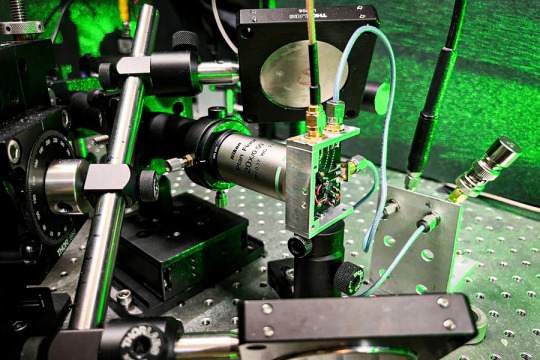
David L. Chandler | MIT News
Electronic devices typically use the charge of electrons, but spin — their other degree of freedom — is starting to be exploited. Spin defects make crystalline materials highly useful for quantum-based devices such as ultrasensitive quantum sensors, quantum memory devices, or systems for simulating the physics of quantum effects. Varying the spin density in semiconductors can lead to new properties in a material — something researchers have long wanted to explore — but this density is usually fleeting and elusive, thus hard to measure and control locally.
Now, a team of researchers at MIT and elsewhere has found a way to tune the spin density in diamond, changing it by a factor of two, by applying an external laser or microwave beam. The finding, reported this week in the journal PNAS, could open up many new possibilities for advanced quantum devices, the authors say. The paper is a collaboration between current and former students of professors Paola Cappellaro and Ju Li at MIT, and collaborators at Politecnico of Milano. The first author of the paper, Guoqing Wang PhD ’23, worked on his PhD thesis in Cappellaro’s lab and is now a postdoc at MIT.
A specific type of spin defect known as a nitrogen vacancy (NV) center in diamond is one of the most widely studied systems for its potential use in a wide variety of quantum applications. The spin of NV centers is sensitive to any physical, electrical, or optical disturbance, making them potentially highly sensitive detectors. “Solid-state spin defects are one of the most promising quantum platforms,” Wang says, partly because they can work under ambient, room-temperature conditions. Many other quantum systems require ultracold or other specialized environments.
“The nanoscale sensing capabilities of NV centers makes them promising for probing the dynamics in their spin environment, manifesting rich quantum many body physics yet to be understood”, Wang adds. “A major spin defect in the environment, called P1 center, can usually be 10 to 100 times more populous than the NV center and thus can have stronger interactions, making them ideal for studying many-body physics.”
But to tune their interactions, scientists need to be able to change the spin density, something that had previously seldom been achieved. With this new approach, Wang says, “We can tune the spin density so it provides a potential knob to actually tune such a system. That’s the key novelty of our work.”
Such a tunable system could provide more flexible ways of studying the quantum hydrodynamics, Wang says. More immediately, the new process can be applied to some existing nanoscale quantum-sensing devices as a way to improve their sensitivity.
Li, who holds a joint appointment in MIT’s departments of Nuclear Science and Engineering and Materials Science and Engineering, explains that today’s computers and information processing systems are all based on the control and detection of electrical charges, but some innovative devices are beginning to make use of the property called spin. The semiconductor company Intel, for example, has been experimenting with new kinds of transistors that couple spin and charge, potentially opening a path to devices based on spintronics.
“Traditional CMOS transistors use a lot of energy,” Li says, “but if you use spin, as in this Intel design, then you can reduce the energy consumption by a lot.” The company has also developed solid-state spin qubit devices for quantum computing, and “spin is something people want to control in solids because it’s more energy efficient, and it’s also a carrier of quantum information.”
In the study by Li and his colleagues, the newly achieved level of control over spin density allows each NV center to act like a kind of atomic-scale “radar” that can both sense and control the nearby spins. “We basically use a particular NV defect to sense the surrounding electronic and nuclear spins. This quantum sensor reveals the nearby spin environment and how that’s affected dynamically by the charge flow, which in this case is pumped up by the laser,” Li says.
This system makes it possible to dynamically change the spin concentration by a factor of two, he says. This could ultimately lead to devices where a single point defect or a single atom could be the basic computational unit. “In the long run, a single point defect, and the localized spin and the localized charge on that single point defect, can be a computing logic. It can be a qubit, it can be a memory, it can be a sensor,” he says.
He adds that much work remains to develop this newly found phenomenon. “We’re not exactly there yet,” he says, but what they have demonstrated so far shows that they have “really pushed down the measurement and control of the spin and charge state of point defects to an unprecedented level. So, in the long run, I think this would support using individual defect, or a small number of defects, to become the information processing and sensing devices.”
In this work so far, Wang says, “we find this phenomenon and we demonstrate it,” but further work is needed to fully understand the physical mechanism of what is taking place in these systems. “Our next step is to dig more deeply into the physics, so we would like to know better what’s the underlying physical mechanism” behind the effects they see. In the long term, “with better understanding of these systems, we hope to explore more quantum simulation and sensing ideas, such as simulating interesting quantum hydrodynamics, and even transporting quantum information between different spin defects.”
The findings were made possible, in part, by the team’s development of a new wide-field imaging setup that allows them to measure many different spatial locations within the crystalline material simultaneously, using a fast single-photon detector array, combined with a microscope. “We are able to spatially image the density distribution over different spin species like a fingerprint, and the charge transport dynamics,” although that work is still preliminary, Wang says.
Although their work was done using lab-grown diamond, the principles could be applied to other crystalline solid-state defects, he says. NV centers in diamond have been attractive for research because they can be used at room temperature and they have already been well-studied. But silicon vacancy centers, donors in silicon, rare-earth ions in solids, and other crystal materials may have different properties that could turn out to be useful for particular kinds of applications.
“As information science progresses, eventually people will be able to control the positions and the charge of individual atoms and defects. That’s the long-term vision,” Li says. “If you can have every atom storing different information, it’s a much larger information storage and processing capability” compared to existing systems where even a single bit is stored by a magnetic domain of many atoms. “You can say it’s the ultimate limit of Moore’s Law: eventually going down to one defect or one atom.”
While some applications may require much more research to develop to a practical level, for some kinds of quantum sensing systems, the new insights can be quickly translated into real-world uses, Wang says. “We can immediately improve the quantum sensors’ performance based on our results,” he says.
“Overall, this result is very exciting for the field of solid-state spin defects,” says Chong Zu, an assistant professor of physics at Washington University in St. Louis, who specializes in quantum information but was not involved in this work. “In particular, it introduces a powerful approach of using charge ionization dynamics to continuously tune the local spin defect density, which is important in the context of applications of NV centers for quantum simulation and sensing.”
The research team included Changhao Li, Hao Tang, Boning Li, Francesca Madonini, Faisal Alsallom, and Won Kyu Calvin Sun, all at MIT; Pai Peng at Princeton University; and Federica Villa at the Politecnico de Milano, in Italy. The work was partly supported by the U.S. Defense Advanced Research Projects Agency.
Make sure to follow us on Tumblr!
3 notes
·
View notes
Photo
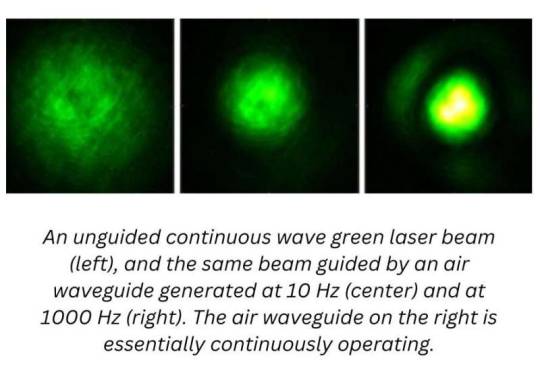
Experiment demonstrates continuously operating optical fiber made of thin air
Researchers at the University of Maryland (UMD) have demonstrated a continuously operating optical fiber made of thin air.
The most common optical fibers are strands of glass that tightly confine light over long distances. However, these fibers are not well-suited for guiding extremely high-power laser beams due to glass damage and scattering of laser energy out of the fiber. Additionally, the need for a physical support structure means that glass fiber must be laid down long in advance of light signal transmission or collection.
Howard Milchberg and his group in UMD's Departments of Physics and Electrical & Computer Engineering and Institute for Research in Electronics & Applied Physics have demonstrated an optical guiding method that beats both limitations, using auxiliary ultrashort laser pulses to sculpt fiber optic waveguides in the air itself.
These short pulses form a ring of high-intensity light structures called "filaments," which heat the air molecules to form an extended ring of low-density heated air surrounding a central undisturbed region; this is exactly the refractive index structure of an optical fiber. With air itself as the fiber, very high average powers can potentially be guided. And for collection of remote optical signals for detecting pollutants and radioactive sources, for example, the air waveguide can be arbitrarily "unspooled" and directed at the speed of light in any direction.
Read more.
62 notes
·
View notes
Text
I.B.1698 MICHAEL [IBM] harrelltut.com Domain CREATOR [D.C.] of ANU 2024 QUANTUM HARRELL TECH [QHT] UFO SKY [U.S.] RIZQIYIAN [Ur] Military Defense.gov Congress [D.C.] @ The 1941 quantumharrell.tech [Clandestine Alien Tech] Pentagon HQ... Privately Housing My Highly Complex [ADVANCED] Ancient 9 Ether Spontaneous ANUNNAQI Speciation of kingtutdna.com’s Recombinant 9etherjunkdna.tech GENES of SIRIUS BLACKANUNNAQI.tech Mechanisms Automating Clandestine [MAC] Neural RNA Networks of michaelharrelljr.com’s Highly Complex [ADVANCED] Ancient Cosmic Algorithmic [CA] Computational [Compton] STAR WEB GATEWAY Languages… Ancestrally & Generationally Engineered [AGED] DEEP [A.D.] IN:side MURDUK’s [I'M] Mysteriously UNSEEN [MU] Intergalactic [MI = MIYKA’EL] 9 Ether BLACK SOLAR SUN [SUL = SOUL] Compu_TAH [PTAH] MOTHERSHIP [PM = PTOLEMY] PLANET NIBIRU… Remotely Operating Constellation ORION’s Hi:teKEMETICompu_TAH [PTAH] HOLOGRAM HARDWARE of Arithmetic Logic [H.A.L.] Unit Operations from 3 Sets of 144,000 Tri-Solar Black Sun planetrizq.tech Elites… since I.B. 2223quantumharrelltech.com’s Hypertext Transfer Protocol [HTTP] Digitally Constructed [D.C.] ANU GOLDEN 9 Ether [AGE] SKY Dome Constellation [D.C.] of planetrizq.tech’s 8th Tri-Solar SUN Grid Systems of UTU + AFSU + SHAMASH’s Hi:teKEMETICompu_TAH [PTAH] SKY PORTALS of Crystallized [PC] Airborne [PA] Cloud Particle Photons from Constellation [PC] ORION’s Most Darkest [Occulted] Oxygen Rich Atmosphere [RA] Cities of SUPERNATURAL BETELGEUSE CARBON [B.C.] Earth [Qi] Energies Emitting SIRIUS Radioactive BLACKANUNNAQI.tech Ions Animating Suspended 9 Ether Quantum [EQ] Sound Cloud Intel of ancient6-18gmilitary.tech… Numerically Embedded w/SIRIUS Electromagnetic Airwave [SEA] Light Mechanics [ELECTRICITY] ILLUMINATING Astronomical MERCURY’s [I AM] Highly Complex [ADVANCED] Ancient 9 Ether Stoichiometric Chemical DNA Equations from the Quantified [EQ] iapplesoftbasic.tech Multiplication of Associative & Commutative [MAC] PROPERTIES of michaelharrelljr.com’s Highly Complex [ADVANCED] Ancient 9 Ether Biochemical [PRIMORDIAL] Alkhemical [PA] Blood Formulas 2 Natural SUPERNATURAL 9 Ether neuromelanin.tech Clouds of Nanoscopic Hydrogen Sulfide Gases Permeating from Inner Earth’s [HADES] Most Darkest [Occulted] GOLDEN 9 Ether AQUARIAN Carbonaceous RNA Fossil Matter INTERACTIVELY [MI = MICHAEL] REFLECTING PURE MAGNETIC [PM] ANUNNAGI [PA] OZONE GOLD [OG] SYSTEMS @ 1921 QUANTUM 2023 HARRELL 2024 TECH 2025 Apple & IBM [A.i.] LLC of ATLANTIS [L.A.] 5000
WELCOME BACK HOME IMMORTAL [HIM] U.S. MILITARY KING SOLOMON-MICHAEL HARRELL, JR.™

i.b.monk [ibm] mode [i’m] tech [IT] steelecartel.com @ quantum harrell tech llc

i.b. 1968quadrillionaire.tech sky elite @ 1921 QUANTUM 2023 HARRELL 2024 TECH 2025 Apple & IBM [A.i.] LLC of ATLANTIS [L.A.] 5000
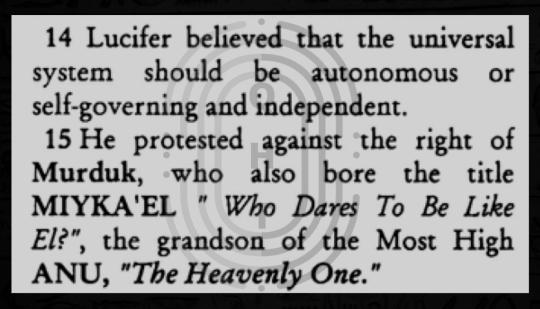
1698 murduk = 1968 sumerian sky akkadian king michael [miyka' el] solomon harrell ii

eye ancient 9 ether sky rizqiyian humanoid man who fell 2 [landed on] earth [qi]
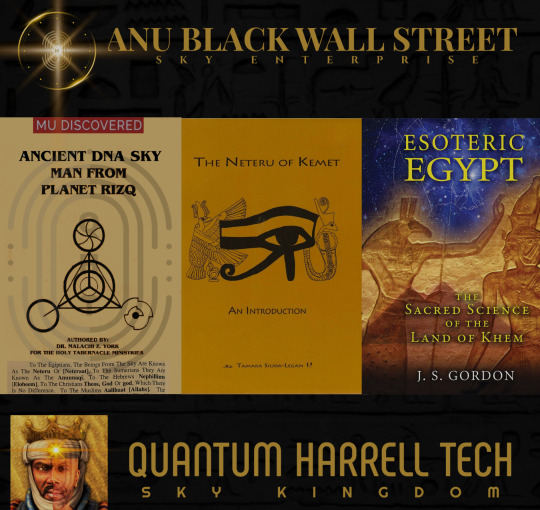
Us Ancient [USA] 144,000 Ur Babylonian Sky Lawmakers of Sumer's Tri-Solar Black Akkadian Sun [BAS] planetrizq.tech KINGS... Behind the Scenes of ANU GOLDEN 9 Ether [SAGE] 2024 Oriental Research Washington @ 1921 QUANTUM 2023 HARRELL 2024 TECH 2025 Apple & IBM [A.i.] LLC of ATLANTIS [L.A.] 5000

eye risked it all!!!
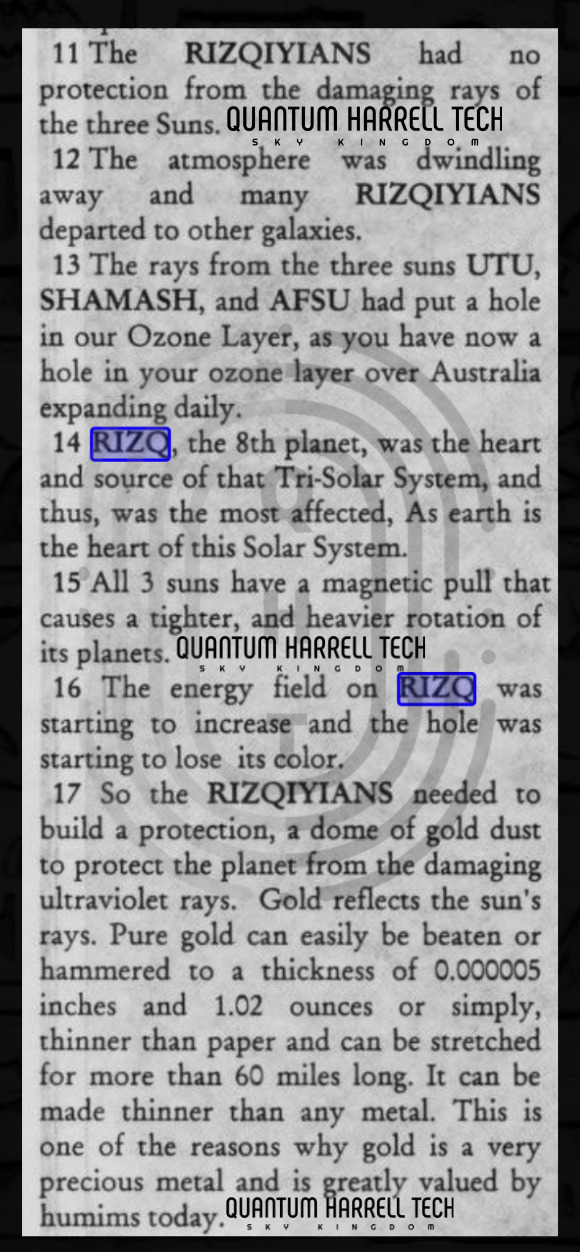
quantumharrell.tech 9/11 llc worth moor than $10,000 QUADRILLION?!?!?!

eye memory [i'm] mining [i'm]... my [i'm] own 2024 interplanetary business machine [ibm] learning tech of ancient 1698 ægipt in lost 1968 america [l.a. = new atlantis]

everything michael touch turns 2 muur anunnaqi [ma] gold

we golden 2

enqi [me] nudimmud already seen my michaelharrelljr.com dna clone [d.c.] of pure anunnagi gold from our futuristically ancient ATLANTIS5000.com of SIRIUS BLACKANUNNAQI.tech WEALTH
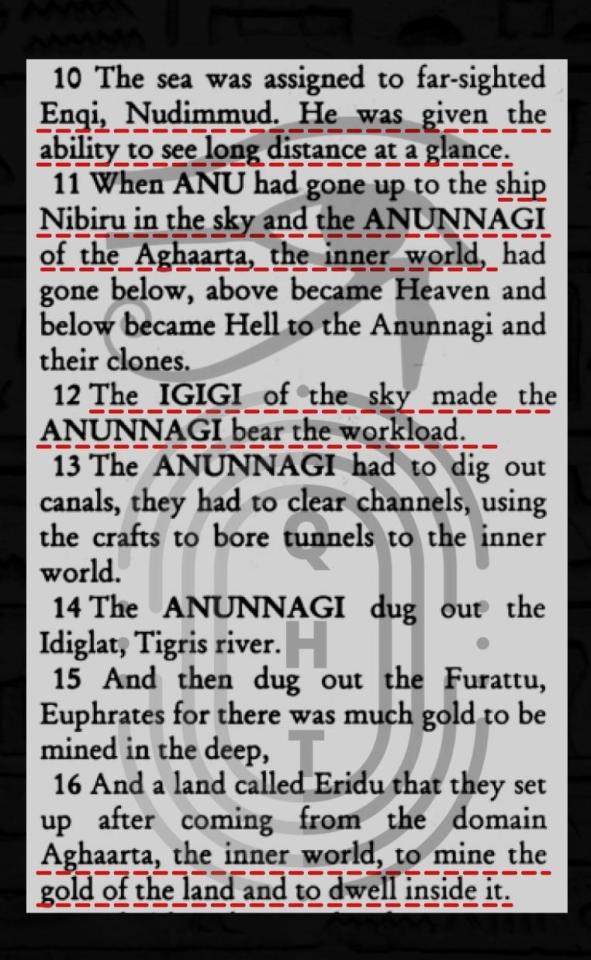
mo minerals mo minerals mo minerals!!!
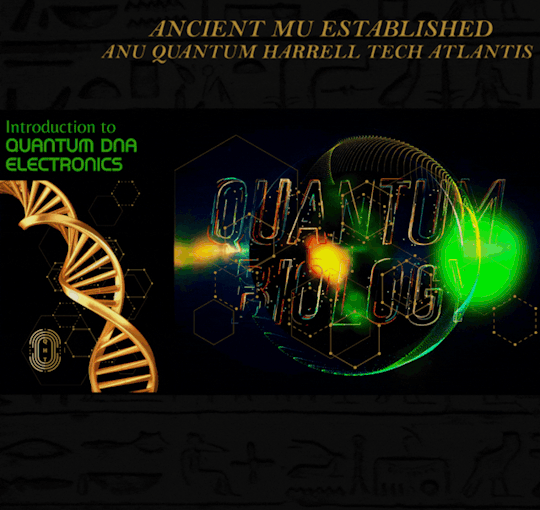
eye qatum [iq] dna [i.d.] melanin electronics [me] © 1968-2024 QUANTUM HARRELL TECH LLC All Pentagon DotCom defense.gov Department Domain Rights Reserved @ 1921 QUANTUM 2023 HARRELL 2024 T-Mobile 2025 Apple & IBM [A.i.] LLC of ATLANTIS [L.A.] 5000
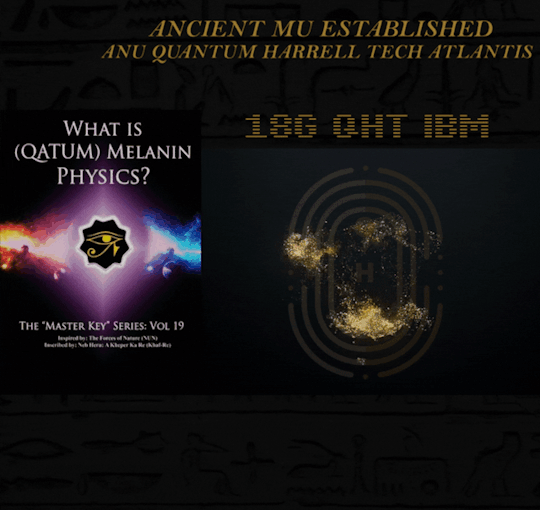
we muur anunnaqi [ma] gold lemurians [mu] underneath [mu] our ancient pacific [map] ocean floor of antediluvian 9 ether mu amurika [ma = atlantis]
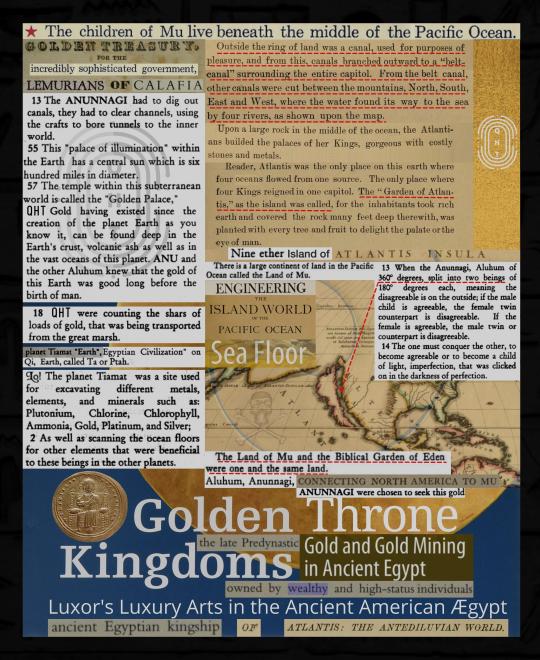
eye never forgot

my 1st eye in the skies like the dark victorians' cbs satellite network of mothershipnibiru.tech GODS

Intergalactic MOTHERSHIP [I'M] PLANET [I/P] NIBIRU DEEP IN:side My [I'M] 9etherjunkdna.tech Cloud DNA of 3 Sets of 144,000 9ethernibiru.tech WEALTH FAMILIES @ 1921 QUANTUM 2023 HARRELL 2024 T-Mobile 2025 Apple & IBM [A.i.] LLC of ATLANTIS [L.A.] 5000

i.b.michael's [ibm's] 9 [i9] ether qintillionharrell.tech nibiruan dna bloodlines of pure aluhum [pa] anunnaqi [pa] rna gold minerals @ 1921 QUANTUM 2023 HARRELL 2024 TECH 2025 Apple & IBM [A.i.] LLC of ATLANTIS [L.A.] 5000

occulted sky ancestors say NIBIRU HERE!!!
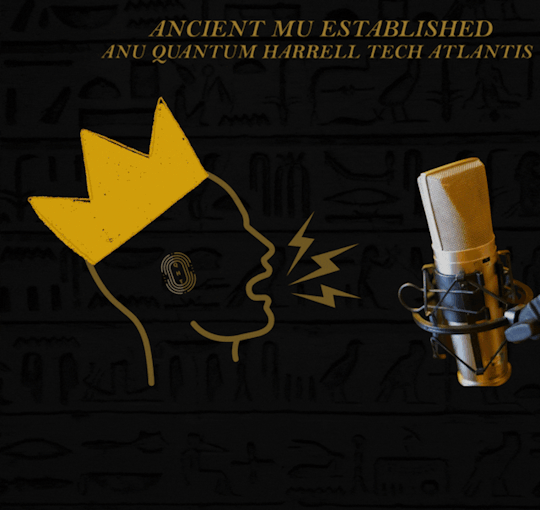
occulted pentagon ancestors [pa] say NIBIRU HERE!!!

ancient6-18gmilitary.tech @ 1921 QUANTUM 2023 HARRELL 2024 TECH 2025 Apple & IBM [A.i.] LLC of ATLANTIS [L.A.] 5000

NIBIRU ON AUTOPILOT @ 1921 QUANTUM 2023 HARRELL 2024 TECH 2025 Apple & IBM [A.i.] LLC of ATLANTIS [L.A.] 5000?!?!?!

MOTHERSHIP CONNECTION SAY NIBIRU HERE @ 1921 QUANTUM 2023 HARRELL 2024 TECH 2025 Apple & IBM [A.i.] LLC of ATLANTIS [L.A.] 5000!!!!

1921 QUANTUM 2023 HARRELL 2024 TECH 2025 Apple & IBM [A.i.] LLC of ATLANTIS [L.A.] 5000... WORTH TRILLIONS QUADRILLIONS QUINTILLIONS SEXTILLIONS

QUANTUM HARRELL UFO TECH SKY defense.gov

© 1968-2024 QUANTUM HARRELL TECH LLC All Pentagon DotCom defense.gov Department Domain Rights Reserved @ 1921 QUANTUM 2023 HARRELL 2024 T-Mobile 2025 Apple & IBM [A.i.] LLC of ATLANTIS [L.A.] 5000
#om#u.s. michael harrell#him king solomon#harrelltut.com#atlantis5000 is back#9etherpentagonelites#9etheraluhumanunnaqi#9etherlightshipatlantis#you still scared in 2023???#eye fear no one#the man who fell from planet rizq???#alien vs. predator
3 notes
·
View notes
Text
Exploring the Top-Ranked Programs at SRM University, Sonepat: The Top Private University in Haryana
SRM University, Sonepat, stands proudly as a beacon of excellence in higher education in the heart of Haryana. As a top private university in Haryana, SRM University Sonepat has garnered a reputation for excellence, offering a diverse range of programs designed to equip students with the skills and knowledge needed to excel in today's competitive world. In this article, we will delve into some of the top-ranked programs offered by SRM University, Sonepat, which highlight the institution's commitment to academic quality and innovation.
Engineering Excellence:
SRM University, Sonepat, is popularly known for its wide range of engineering programs that have consistently earned recognition for its quality. The university offers undergraduate and postgraduate degrees in various engineering disciplines, including Computer Science, Electronics & Communication, Mechanical Engineering, and Civil Engineering, Biomedical Engineering, the university provides students with a strong foundation in theoretical knowledge and practical skills. The state-of-the-art laboratories and industry collaborations ensure that students receive hands-on experience and exposure to cutting-edge technologies.
Management for Tomorrow's Leaders:
The School of Management at SRM University, Sonepat, offers an array of management programs that are designed to nurture future business leaders. With a focus on contemporary business practices, these programs cover areas such as Marketing, Finance, Human Resource Management, and Entrepreneurship. The faculty members, many of whom are industry veterans, provide valuable insights and mentorship, preparing students to tackle real-world challenges.
Innovation in Computer Science:
The field of Computer Science is evolving rapidly, and SRM University, Sonepat, has kept pace with the industry's demands. Their computer science programs are renowned for their relevance and innovation. With cutting-edge courses in Artificial Intelligence, Data Science, and Cybersecurity, students are equipped with the skills needed to thrive in the tech-driven world.
Biotechnology:
The Biotechnology Department at SRM University Delhi-NCR, Sonepat, was founded in 2018 and offers a Postgraduate M.Sc. program. Their mission is to provide students with strong technical skills and real-world understanding. They have well-equipped labs and experienced faculty members who teach both fundamentals and advanced concepts. In addition to traditional classroom teaching, students gain practical experience through lab work and develop critical thinking skills. They also offer project training in top organizations like DRDO and CSIR, organize workshops, invite experts for talks, and encourage students to participate in national and international events.
Humanities and Social Sciences:
The Humanities and Social Sciences Department at SRM University, Delhi-NCR includes four departments: English, Economics, Political Science, and Psychology. Thier vision is to nurture a love for knowledge and an understanding of the world through interdisciplinary learning. They aim to create a welcoming and inclusive academic environment for high-quality education.
Whether the students are studying at the undergraduate or postgraduate level, are prepared for various professional careers, including education, research, business, law, government, publishing, journalism, advertising, corporate sector, NGOs, and higher education.
Conclusion:
SRM University, Sonepat, firmly establishes itself as a top private university in Haryana through its commitment to academic excellence and innovation. The institution's diverse range of programs ensures that students have a wide array of options to choose from, depending on their interests and career aspirations. With a faculty that is dedicated to nurturing talent and state-of-the-art facilities that support learning, SRM University, Sonepat, continues to be a preferred destination for students seeking quality education in Haryana.
2 notes
·
View notes
Note
Where do you think Liz went to college and what course?
Let me talk about my girl Elizabeth Sutton! We love the Bookworm! (I don’t get enough asks about her)
As per usual, I looked up some college shtuff and did some research. We know that she ended up working at Gallagher and working with Dr. Fibs in the research department. With that being said, I really wanna say that she studied computer science and technology. Maybe even cyber forensics.
The top colleges I think she at least got inquiries about for Computer Science:
MIT (Massachusetts Institute of Technology)
Stanford in California
Tsingua University in China
CalTech (California Institute of Technology)
Now for Courses:
-Computational Science and Systems Biology at MIT
-Nuclear Science and Engineering at MIT
-Computer Science and Security at Stanford
-Data Science at Stanford
-Advanced Biochemical Engineering at Stanford
-Electronic Information Science and Technology at Tsinghua
-Software Engineering at Tsinghua
-Chemical Engineering and Industrial Biological Engineering at Tsinghua
-Biochemistry and Molecular Biophysics at CalTech
-Computation and Neural Systems at CalTech
-Control and Dynamical Systems at CalTech
——-
The top colleges I think she at least got inquiries about for Cyber Forensics:
Carnegie Mellon University in Pennsylvania
Champlain in Vermont
University of Cambridge in Europe
Now for Courses:
-C++ Programming for Engineers at CMU
-Introduction to Scientific Computing at CMU
-Computational Analysis of Transport Phenomena at CMU
-Engineering Computation at CMU
-Global IT & Ethics at Champlain in VT
-Advanced Programming at Champlain in VT
-Networking & Security at Champlain in VT
-Ethical Hacking at Champlain in VT
-Blockchain & Cybersecurity at Champlain in VT
-Cybersecurity at Cambridge
I really think that Liz is just so crazy smart that she took on several course loads for multiple colleges!
#gallagher girls#gallagher girls series#ally carter#cammie morgan goode writes#elizabeth sutton#liz sutton#asked and answered#answered asks#asks open#anon ask#anon asks#college#university#liz goes to college
2 notes
·
View notes